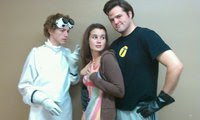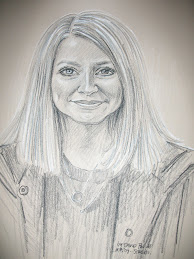Have you ever noticed why you love a good story? It's because you get involved in the journey the characters are taking, at least emotionally.
I can't put a book down when I care about the characters and what happens to them. But, to care about the characters, we have to get to know them really well.
It doesn't even matter if we love or hate the people in the stories we read. We simply have to feel so strongly about them that we can't wait to find out what's going to happen to them.
As writers, that's what we have to do to make our stories come alive: make the reader love or hate (and maybe both) our characters. To do that, the characters have to be multi-dimensional.
The best way to achieve that goal is to give your characters many facets to their personalities. We have to work hard, as writers, to chip and shape our characters into full-bodied individuals. Before you know it, those boring lumps will turn from mere words into brilliant diamonds.
One way to work on this goal is to use a Character wheel, which is similar to a color wheel. We want to make our characters so vivid they'll stand out in the crowd.
Worksheet:
Start by drawing a circle on a piece of blank paper for each of the main characters in your manuscript.

Now slice the circle into sections - like a pie

Put your character's name in the center of the page, above the blank circle or "character wheel" so you can come back and refer to your wheel time and time-again.
Character's Name
Label each section of your pie with one of the following topics and fill that piece of the pie in with character specific information:
1) Personality: Shy, timid, selfish, sneaky, conceited, impatient, sly, determined, impatient, cheap, etc.
2) Likes: Video games, tennis, running, t.v., reading
3) Dislikes: homework, dancing, playing the piano
4) Physical Appearance: Hair color, height, weight
5) Hobbies: rock collecting, ballet, soccer
6) Impressions: How others see your character
My critique group used this worksheet to develop character wheels last Saturday during our bi-monthly session. We all worked on one writer's main characters during that session, next time we will work on another member's characters.
We simply started throwing out characteristics that we thought fit the "people" we had read about during our critique sessions.
It was a lot of fun and we all came away knowing the characters much better.
If you have fun with this exercise, you can adapt the character wheel to make a story wheel. Simply label the pieces of the pie with:
1) Story setting,
2) genre,
3) major problems,
4) conflict,
5) action,
6) resolution
Now start filling in the pieces. Before you know it, you're going to have a multi-layered, rich pie ;)
































